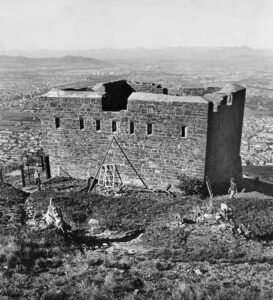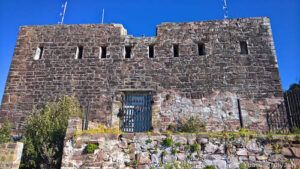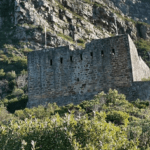The Kings blockhouse
Boer War fort near Hout Bay
The King’s blockhouse on the Mowbray ridge was built between 1795 and 1803 by the British to defend against any enemy attack. Along with the Prince of Whales and the Queen’s Blockhouses, it formed a defensive line to the approach to Cape Town.
It is located in a prominent part of the mountain. More recently it was used as a signal station for communications between Table Bay and False Bay.
In 1814 a few redoubts were built to strengthen the defence and at a time this was considered as the boundary between Cape Town and the “country districts”
Story from Saartjie Klipkop
The King’s Blockhouse is a well-known landmark on Mowbray Ridge, on the slopes of Devil’s Peak, Table Mountain.
It is strategically placed to command views of Table Bay and False Bay, and combined with the York and Prince of Whales Blockhouses formed a defensive line guarding the land approach to Cape Town and Table Bay.
Following the first British occupation of the Cape in 1795, the existing Dutch line of defence, known as the French line, was extended by the addition of three blockhouses up the slopes of Devil’s Peak.
These included the Queen’s Blockhouse, on the Zonnebloem Estate, the Prince of Wales, above present-day De Waal Drive, and the King’s Blockhouse further up the mountainside.
The first two have since fallen into a state of disrepair but the King’s Blockhouse, a massive stone structure 7m square, located on a prominent point on the Devil’s Peak, was retained in use as a signal station for communication between Table Bay and False Bay.
The line was further strengthened in 1814 when several additional redoubts were built, and at one stage served as the official boundary between Cape Town and the country districts beyond.
The King’s Blockhouse was declared a National Monument under old NMC legislation on 4 February 1938.


The blockhouse can be reached by hiking or by bike up a steep path from behind the Rhodes Memorial. Follow the contour path running above Newlands Forest up to Skeleton Gorge. Then continue to Kirstenbosch. It is better to hike in groups as muggings have happened on the slopes of the mountain.
A forester’s dwelling was built in 1893 below the Kings blockhouse. It was demolished and now there is just a plaque memorial to the original forester Frank Jarman. The plaque reads ” He found these barren stony slopes treeless and he left them covered in forest. The early forest cultivation was done with convict labour. The fort was used as a prison. The convicts were housed in the fort from 1893 until the 1920s
The Kings blockhouse was declared a national monument in1936
GPS 33° 56′ 6.1273″, 18° 28′ 13.8018″
Hike to the blockhouse



